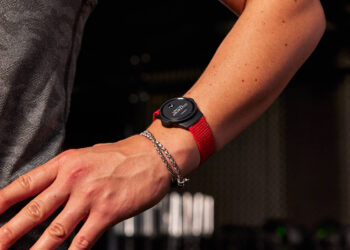The fitness industry is constantly changing as more competition enters the market, so it’s crucial gym owners adapt to these changes in order to stay relevant. Some aspects of gyms will never change — there will always be dumbbells, treadmills and other general cardio and strength machines. But over time, customer demand drives the need for different types of equipment.
Several years ago, the main focus for anyone going to the gym was to get a good workout in, which led gym owners to design their spaces with this need in mind. Over the last five to 10 years, there’s been a major shift in what gym members want out of a fitness center. Now, many are wanting, and in a lot of cases even expecting, gym owners to provide recovery equipment and tools to have a more well-rounded wellness experience.
Recovery allows the body to better repair and strengthen muscles after training — whether that be a quick cardio session or HIIT strength class. Beyond standard resting in-between workouts, recovery solutions have surged as a way to quickly and effectively reduce the stress your body goes through during physical fitness, as well as help prevent injuries. With these tools being considered a necessity in keeping your body healthy during workouts, the demand the industry has seen in this space has skyrocketed in recent years. Products like massage guns, compression boots, water massage beds and cryotherapy are becoming the new standard in sweep fitness centers as a way to retain and attract customers.
In addition to prioritizing recovery, the correlation between working out and mental health has become a mainstream discussion among the general population. In fact, a 2021 IHRSA study indicates mental well-being as the second most important motivator for exercise. To address this, fitness facilities are starting to design more relaxing and community-focused environments with access to wellness spaces, recovery products and trainers well-versed on the topic. These amenities and services help to attract a majority of the industry’s target audiences.
Fitness facility owners should be knowledgeable of this trend in order to keep up with demand and stay ahead of competition. While gym-goers are looking at contributing factors like monthly price and proximity to their home to decide on where they workout, more individuals are also prioritizing access to amenities like recovery products. As this is trending upwards, both large chains and boutique facilities are integrating devices and services that meet these demands. To further enhance these experiences, many are creating wellness spaces that are designed specifically for mental and physical recovery.
HydroMassage, for example, creates lounge chairs and beds that incorporate hydrotherapy, cryotherapy and compression for a customizable recovery and rejuvenating session. Recently, we developed wellness pods that are built specifically for mental relaxation that offer gym members a unique and positive experience for both their bodies and their minds. Other companies offer complementary tools like percussive therapy massage guns, vibrating foam rollers, and leg compression boots. The benefit of these devices is that they can be placed throughout the gym, or in designated rooms such as wellness spaces.
Just like any other gym equipment, recovery solutions are an investment. We often see that fitness centers will allow members to access them as part of a premium membership package. This allows owners to utilize the recovery products as a way to sell more premium memberships, therefore bringing in more revenue. This is a great additional benefit that can help to offset the cost of investing in these items to begin with.
Gym owners have to adjust all the time, whether that’s losing a staff member or fixing a piece of broken equipment. Other times, it’s about the big picture. The evolution of recovery taking center stage in this industry is an example of a big picture adjustment gym owners should be making in the near future. The focus on recovery and mental wellness won’t be going away anytime soon, which means gyms that aren’t in line with that change need to adjust before they start to fall behind their competition.
Author Bio:
Paul Lunter is the founder and CEO of HydroMassage. He founded the company in 1989 and has been developing water massage beds and chairs since then. HydroMassage’s most recent products are the CryoLounge+, a cryotherapy chair, and the RelaxSpace Wellness Pods, an immersive relaxation experience.










